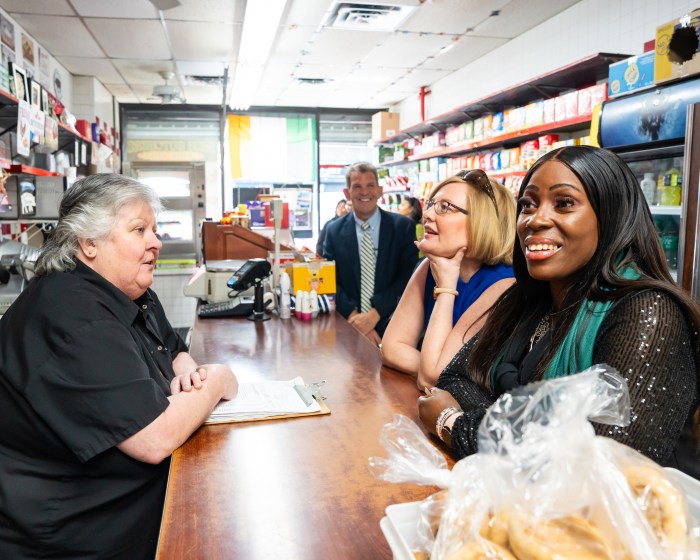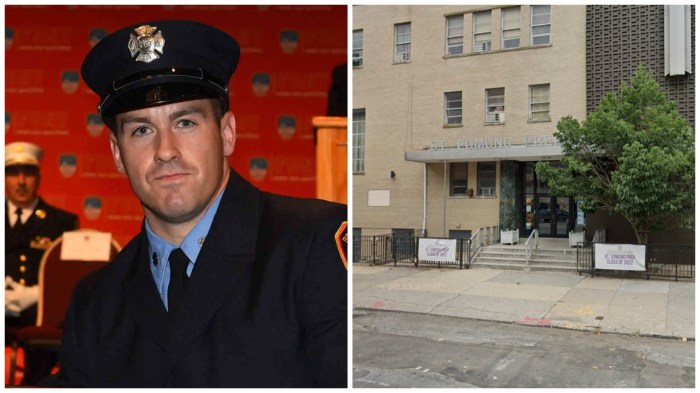
“This cannot be a complete shutdown.”
That’s the most important demand from the L Train Coalition, a group of predominately business organizations protesting proposed disruptions to the L, says Carlo Scissura, president of the Brooklyn Chamber of Commerce.
The Coalition has an even more drastic solution to the damage caused by Superstorm Sandy: a quickly built, entirely new tunnel, so service won’t need to be disrupted at all.
“It would be wonderful,” says Scissura. “It would be great.”
When news broke in January that the MTA was planning massive disruptions to the L train, it provoked apprehension along the line. Commuters worried about getting to work or out of their neighborhoods; businesses fretted that their customers might disappear.
Scissura, who as president of the Chamber of Commerce is one of the founders of the Coalition, notes that the bars and restaurants along the L are a vibrant part of Brooklyn’s nightlife, so even nighttime shutdowns would be problematic.
The world revolves around Brooklyn
There is little doubt that a shutdown of a key train would have an impact on area businesses.
Michael Ayoub, the founder of Fornino’s, a pizzeria just off the L at Bedford Avenue, says that a disrupted L could be a significant problem on weekends, when visitors and tourists make the trip.
“The L train, at the end of the day, is the lifeblood,” he says. But a new tunnel? “We should all live that long,” he says, with admirable realism about the American record of tunnel construction.
Some people professed to be unconcerned about the missing L. “I’ll just take an Uber,” says one who gave her name only as Brianne. “They’ll probably drop rates,” she claims, bizarrely.
Others aren’t looking forward to the double buses from Astoria or Sunnyside, or early morning wakeups to get to second jobs in Manhattan.
Walter Durkacz, who operates Wonders of Walter, a vintage pop-up on Berry Street, says businesses like his might lose “the people from the city,” estimating a 30 percent drop.
A Brooklyn resident since 1977, he says he remembers when “everyone wanted to go to the city. Now the city wants to go to Brooklyn.” Durkacz, like other business operators, hopes that locals and other Brooklynites will continue their patronage enough to keep the lights on.
The scariest words: “Service change”
One of the first rules of living with the MTA should be: Never scoff at another train line’s woe. And long-term train disruptions like what seems to be in store for the L are certainly unfortunate situations.
But wildly unrealistic asks and self-centered considerations, even if offered to bolster negotiating positions, only reinforce stereotypes of Williamsburg as a playground far removed from many New Yorkers.
While the Second Avenue Subway, which would alleviate pressure on the most overcrowded subway line in America, marches towards a century of slow progress, would we really divert billions to build a redundant tunnel?
Scissura says that given the immense population growth and development in the area, a new tunnel would be good in general — “a valuable investment.”
But pressed on other transit priorities for Brooklyn, he happily ticks off an express F train (“no-brainer because the tracks are there”), a more efficient R, even an extension of the 2 or 5 line from the Junction to Marine Park and Floyd Bennett Field.
Any of those would be much more useful to many more Brooklyn residents. Wouldn’t it be nice if they had influential coalitions?
This is amExpress, the conversation starter for New Yorkers. Subscribe at amny.com/amexpress.

















